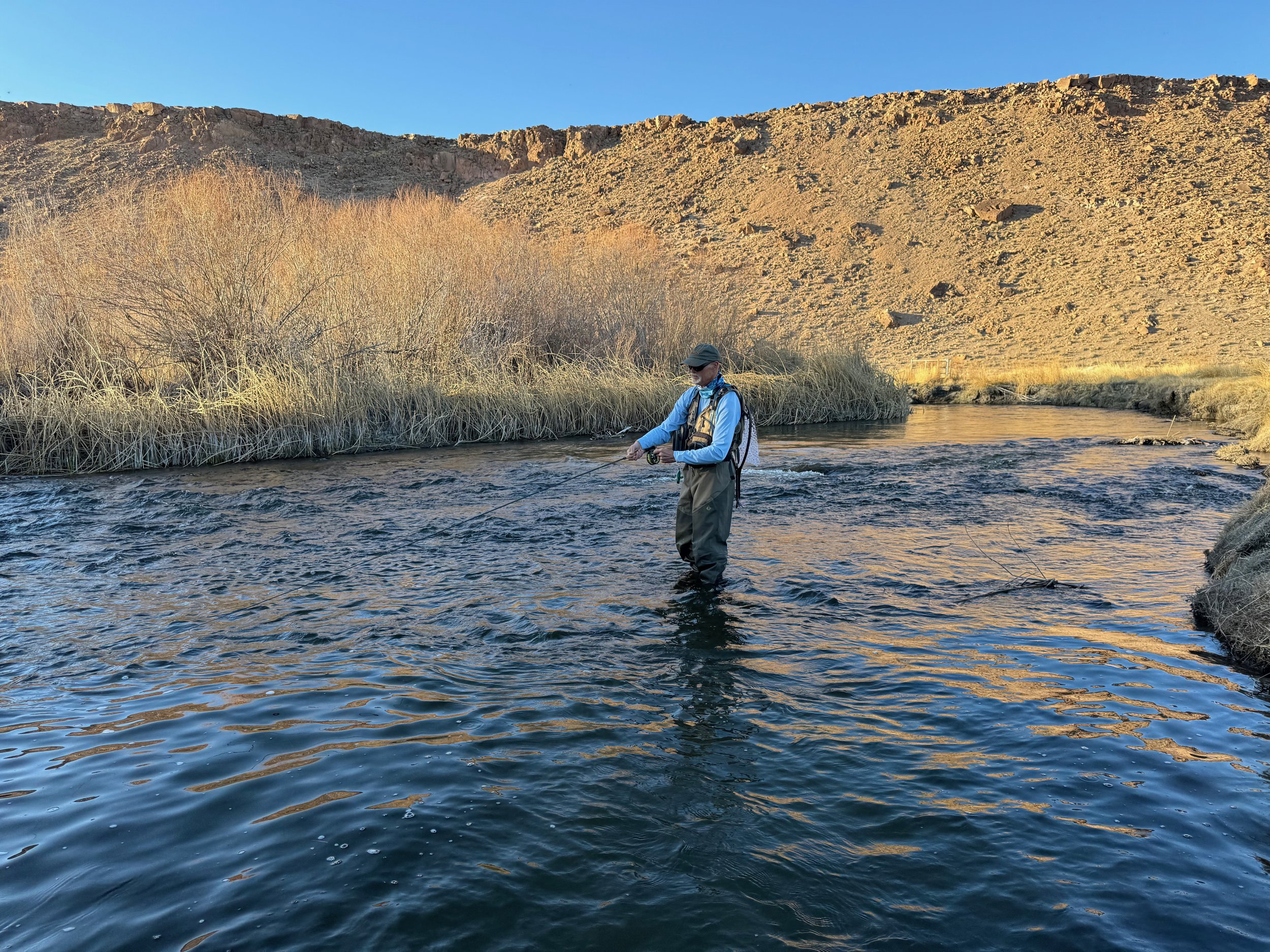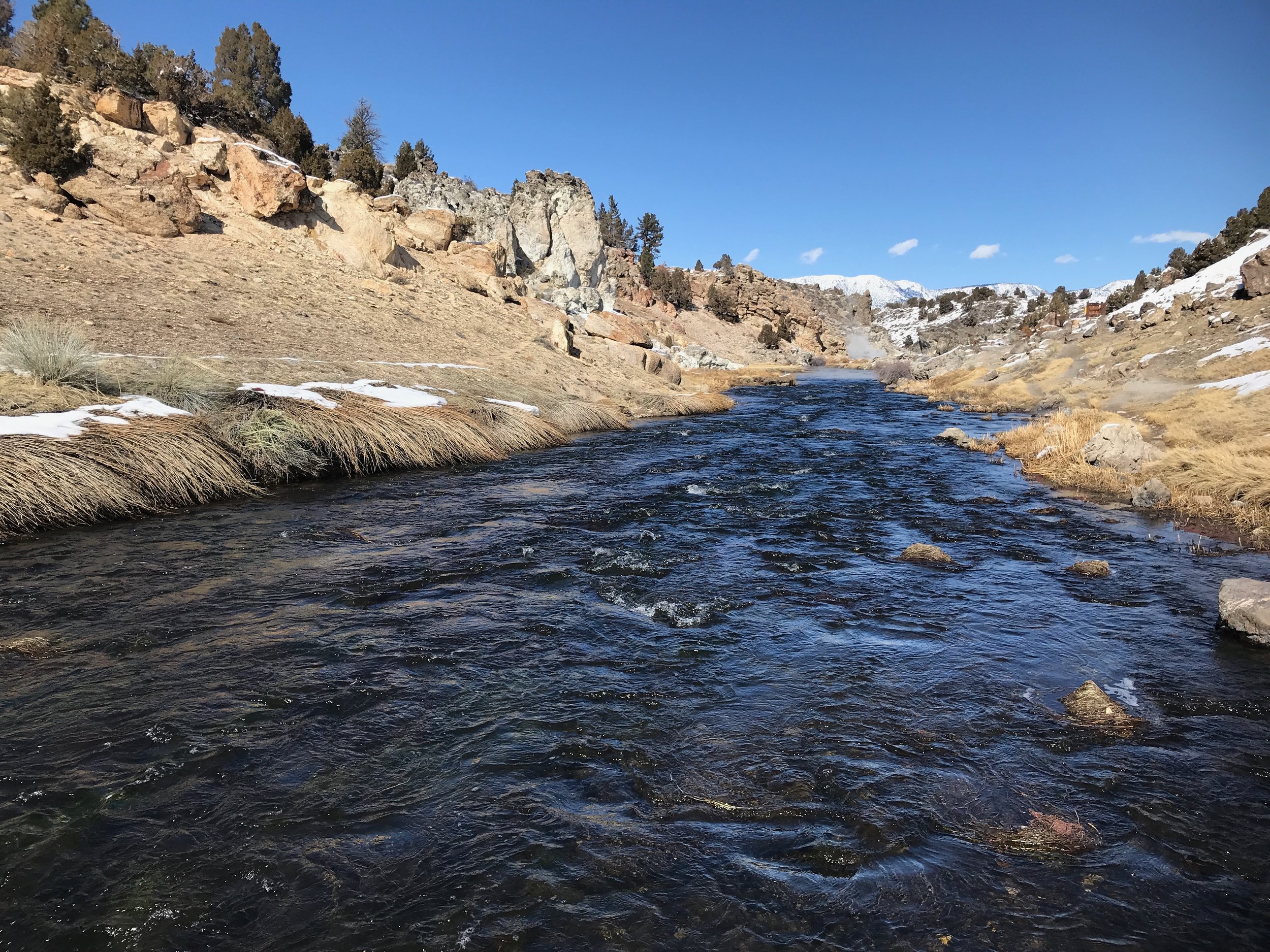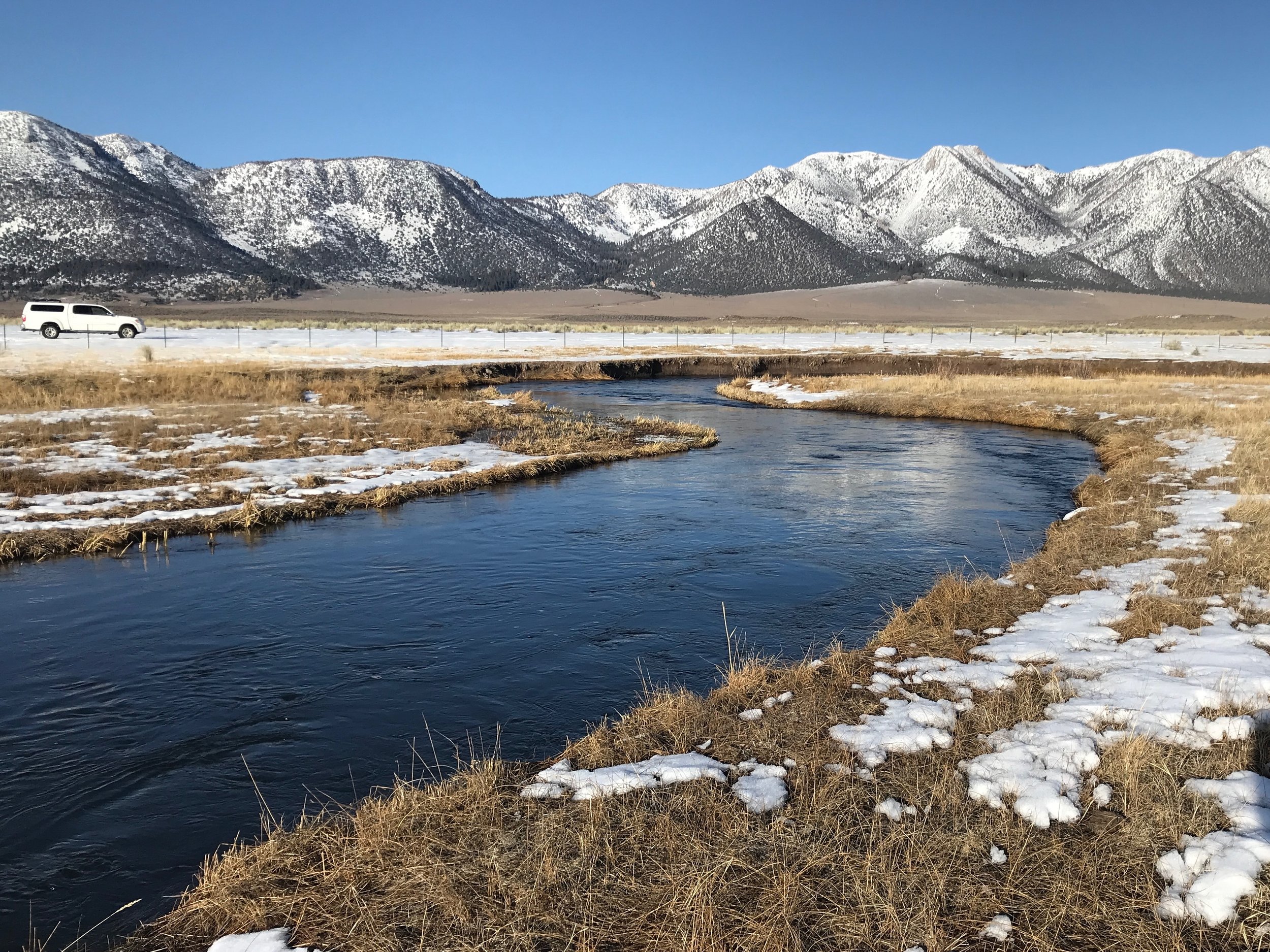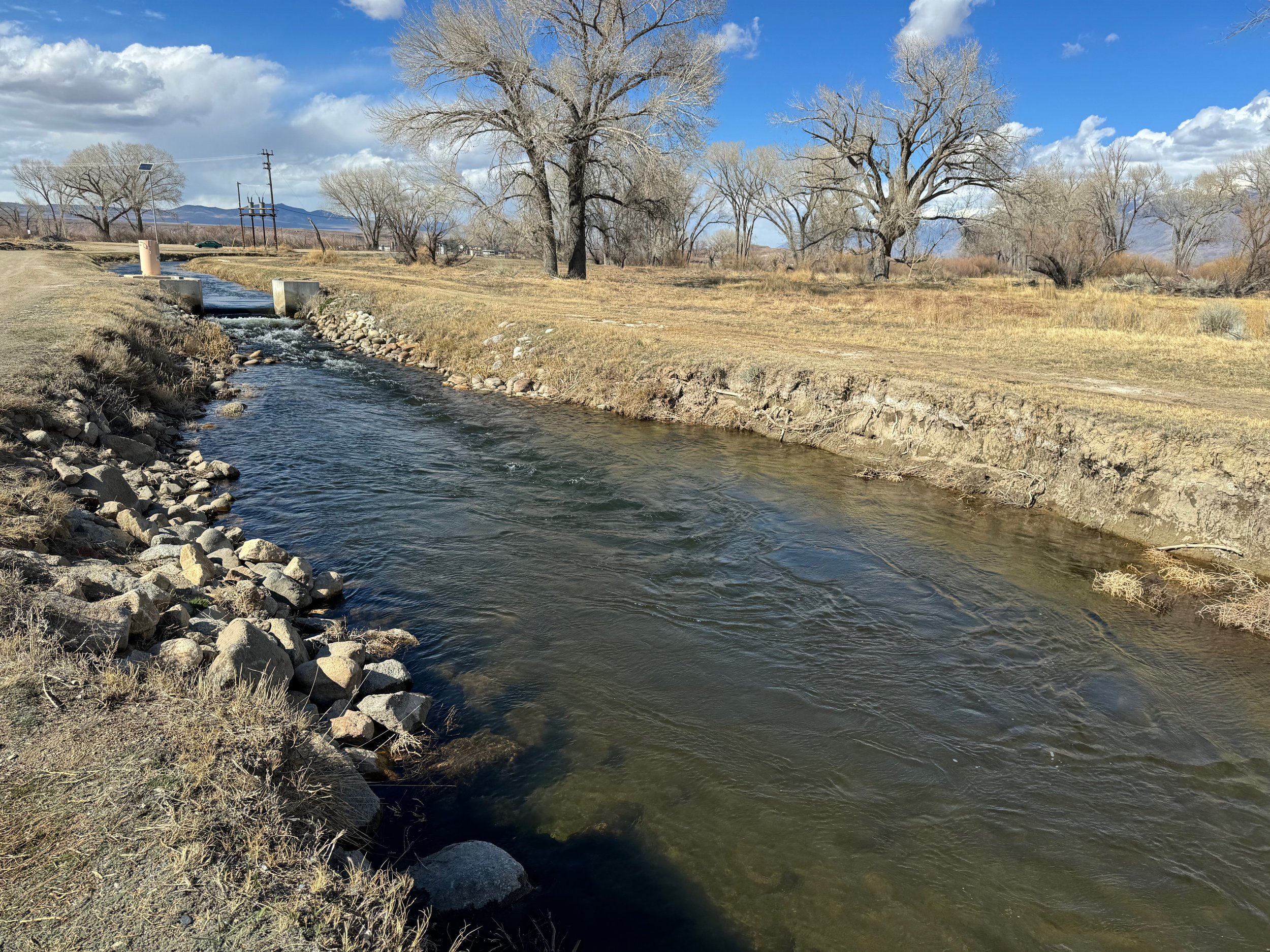The Eastern Sierra is experiencing spring like weather with precipitation in upper elevations and lots of wind throughout the region. In between the storms is good weather and great fly fishing opportunities. Fly fishers driving out to upper elevation waters need to watch out for mud on the dirt roads. You don’t want to spend your fly fishing time digging out of the mud. Every week we head out of winter, hatches of mayflies, caddis flies and midges are increasing. With daylight savings hatches are now in the early afternoon. Nymphing continues to be the most productive method of fly fishing Eastern Sierra waters in winter.
With daylight savings it’s time to take advantage of evening fly fishing on Eastern Sierra waters.
Lower Owens River
Wild Trout Section:
Warm weather and hatches of mayflies and caddis flies makes fly fishing on the lower Owens River as good as it gets in winter time. Indicator nymphing and Euro nymphing is consistently providing trout with mayfly and caddis fly nymph imitations. Indicator nymphing with one or two flies a size 1 split shot and the indicator one and half to times the average depth of water above the bottom fly is the rig that is producing. I prefer to use 5X fluorocarbon for the tippet. Bead head flash back pheasant tail nymphs, olive quilldigons, olive perdigons, Frenchie’s, hot spot pheasant tail nymphs, Butano nymphs and Lafontaine sparkle emergers are the nymphs that are producing trout. For dry flies fish with X-caddis, sparkle caddis, elk hair caddis, blue wing olive parachutes and Adams Parachutes.
Eric Sechrist from Montclair getting ready to land a lower Owens River wild brown trout he caught on a size 18 bead head flash back pheasant tail nymph under an indicator.
Hot Creek
Interpretive Site:
When this current storm moves out it looks the Eastern Sierra will get a warm dry period. The snow on the road into Hot Creek should melt enough to allow fly fishers to drive in. For now no one has laid tracks in to the Interpretive site. Fly fishers fishing in the morning pretty much have the creek to themselves. Mayflies and caddis are providing the insects the trout are feeding on. There are fish coming to the surface offering dry fly activity for those anglers looking to fish dry flies. The dry fly activity is not consistent yet. Bead head flash back pheasant tail nymphs, olive quilldigons, hot spot pheasant tail nymphs and Frenchie’s are the patterns that imitate the blue wing olive mayfly nymphs. Adams parachutes, blue wing olive parachutes, X-caddis and elk hair caddis are the patterns that are working on the surface on the days that the hatch is strong enough to get the trout to consistently feed on the emerging insects.
With warmer weather the snow on Hot Creek is quickly receding and the trout are feeding on mayflies and caddis flies.
Hot Creek
Canyon Section:
Fly fishers can drive out to the three canyon parking areas as there are tracks in the snow making this area accessible. If we get the warm weather we are supposed to the snow should melt quickly. This is a great area to fly fish with a Euro rig, dry and dropper or with an indicator. Mornings to early afternoon is the best time to be on the water as this is when the insects are most active and the trout are consistently feeding. Bead head flash back pheasant tail nymphs, olive quill nymphs, olive quilldigons, hot spot pheasant tail nymphs, Frenchie’s, Lafontaine sparkle emergers, Butano nymphs and olive burlap caddis are the productive nymphs. Dry fly anglers fishing with Adams parachutes, olive sparkle duns, blue wing olive parachutes, gray X-caddis and gray spent partridge caddis are the productive flies.
Warm weather is making access to the upper Owns River good just beware of mud on the spur roads to the river.
Upper Owens River
Above Benton Crossing Bridge:
Trophy trout season is still holding on as persistent fly fishers are finding a few trophy rainbow trout still in the river. There are a few resident trophy brown trout still being caught. Fly fishers need to be aware of the mud on the spur roads out to the river from the main dirt roads. It’s easy to misjudge the mud and get your vehicle stuck. Fishing the deep holes, deep runs and cut banks with stoner nymphs, green/gold Prince nymphs, Richard’s gold ribbed hare’s ear variation, egg patterns, squirmy wormies, mop flies and San Juan worms are producing one to three trout per fly fisher per fly fishing session.
With low clear water fly fishers are spooking trout and the fly fishing is as tough as it gets..
Bishop Creek Canal
Behind the Old Ford Dealer:
Bishop Creek Canal is in desperate need of an increase in water flows. At present water flows It’s almost impossible to approach the trout in the canal without spooking them. This water is not worth the effort to fish it until the flows increase.





